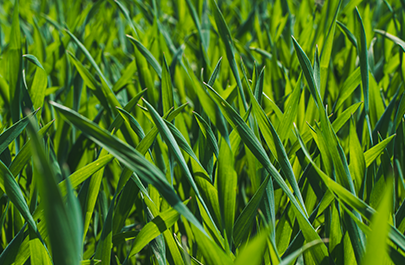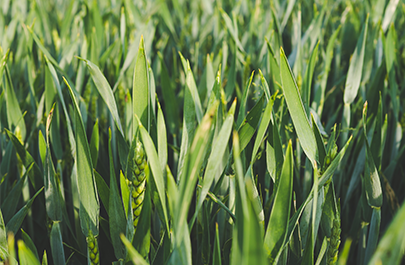






Today, wheat is produced for feed, flour, starch and bioethanol production. Therefore, wheat varieties are classified according to their quality characteristics. The fertilizer strategy also depends on production targets. Nitrogen plays the most important role here. Wheat prefers medium to heavy soils at a neutral pH. Light and sandy soils tend to dry out faster in spring. Wheat requires adequate water supply; dryness quickly leads to massive losses in yield.
A recommended fertilization plan takes the previous crop, soil conditions, and the supply of the main nutrients (phosphorus, potassium and magnesium) into account. It is crucial to apply the right amount of nutrients according to a defined strategy and to pay attention to the right time of application. Depending on yield, wheat deprives the soil of an unequal amount of nutrients (see table). The amount of nutrients contained in crop residues remaining in the field after harvesting is well below the extraction rate. In order to maintain soil fertility, the amount of nutrients removed must be returned. This can be done both by organic and by mineral fertilizer or by a balanced combination of both.
(Unit/t of production)
(Unit/t of production)
N
30
22
Very Sensitive
P2O5
9
8.5
Very Sensitive
K2O
15
5
Sensitive
MgO
2.5
1.9
Sensitive
SO3
8
7
Very Sensitive
TE
copper (Cu) (150g/ha in granite soils) and manganese (Mn) (500g/ha in humus soils)
https://www.lat-nitrogen.com/en/gb/product-sub-category/n+s-fertilizers-6Winter wheat is usually fertilized three times, depending on the production target.
First application in spring

Second application in spring

Third application

First dose in spring at the beginning of the growth period:
The first dose of fertilizer in spring is crucial for an early start and quick development. This dose influences tillering and the quantity of ears (ears/m²). Especially after the winter, it is important to provide phosphorus, potash and sulphur for a good growth start. Special attention should be paid to the nitrogen form. Only nitrate is readily available under cool and cold spring conditions. The conversion of ammonium to nitrate at 5°C soil temperature can take up to several weeks. Low soil temperature also reduces the mobilisation of phosphorus. Therefore, the application of NP fertilizers containing water-soluble phosphorus is useful to provide enough available phosphorus. If phosphorus and potassium is not fertilized in autumn, the use of an NPK fertilizer in spring is recommended.
Dose at the start of shooting:
The second dose is given in the period between the start of shooting and the two-node stage (EC 30-32). In this phase, the development of the spike takes place in the stalk and this stage is crucial for the formation of a larger quantity of grains per ear. A denser stock should be fertilized a little later (EC 32). Thus, the wheat has enough time to reduce the shoots due to lack of nitrogen. If the stock is too sparse, every single stalk must develop into a productive ear, which requires earlier fertilization (EC 30). From stage EC 31 to stage EC 39, wheat consumes up to 5kg N/ha/day. Therefore, it is necessary to provide enough nitrogen in the first and second doses (combined 120-140kg N/ha). The stock density can be controlled best with nitrate nitrogen.
Dose for ear emergence:
The last application is made between the appearance of the flag leaf (EC 37) and the beginning of ear emergence (EC 51). At this stage, nitrogen administration has a significant impact on grain weight and protein content. Fertilization is already required at the flag leaf stage (EC 37-39) if the yield is to be maximized. Feed wheat is usually fertilized at this stage, if necessary. The dose at ear emergence maximises protein content (quality). Quality wheat is fertilized at this stage. All straight nitrogen fertilizers may be used as nitrogen sources. However, current test results show a higher protein content if an N+S fertilizer is used. Of course, the third application can be skipped if yield expectations are low due to adverse weather conditions or any other negative impact on yield.
LAT Nitrogen Austria GmbH
St.-Peter-Strasse 25
4021 Linz, Austria















